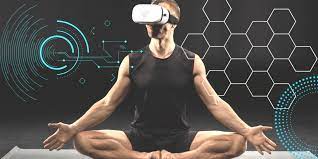Evolution of Exercise in the Digital Age
As technology continues to advance, its impact on various aspects of our lives, including fitness, becomes increasingly apparent. The digital age has ushered in a new era of exercise, where fitness apps and virtual training platforms play a transformative role in how we approach and engage in physical activity.
Role of Fitness Apps and Virtual Training
Fitness apps and virtual training have revolutionized the way individuals plan, execute, and track their workouts. This article explores the evolution of exercise in the digital age, highlighting the benefits, challenges, and future trends associated with the integration of technology into fitness routines.
Variety of Fitness Apps Available
The digital marketplace is flooded with an array of fitness apps catering to different preferences and fitness goals. From guided workouts to nutrition tracking, these apps offer a diverse range of features to accommodate various user needs.
Personalization and Tracking Features
One of the key strengths of fitness apps lies in their ability to personalize workout plans. Users can input their goals, fitness levels, and preferences, allowing the app to generate tailored exercise routines. Additionally, tracking features enable users to monitor their progress, fostering motivation and accountability.
Accessibility and Convenience
Virtual training breaks down geographical barriers, enabling individuals to access workouts from the comfort of their homes. This accessibility is particularly advantageous for those with busy schedules or limited access to traditional fitness facilities.
Diverse Workout Options
Virtual training platforms provide a wealth of workout options, ranging from traditional exercises to innovative routines. Users can explore yoga, HIIT, strength training, and more, ensuring that there is a suitable workout for every fitness enthusiast.
Integration of Technology for Enhanced Experience
Virtual training often incorporates interactive elements, such as real-time feedback, augmented reality, and virtual coaches. These technological enhancements enhance the overall exercise experience, making workouts engaging and effective.
Overreliance on Technology
While fitness apps offer valuable tools, there is a risk of overreliance on technology. Striking a balance between using digital resources and embracing diverse workout experiences is essential to prevent dependency on virtual platforms.
Privacy and Security Concerns
With the collection of personal data through fitness apps, privacy and security become paramount concerns. Users should be cautious about sharing sensitive information and opt for apps with robust privacy policies.
Balancing Virtual and In-Person Workouts
Virtual training should complement rather than replace traditional in-person workouts. Balancing both approaches ensures a well-rounded fitness routine, incorporating the benefits of technology and the social aspects of group exercises.
Overview of Leading Fitness Apps
Several fitness apps have gained prominence in the market, each offering unique features and specialties. From high-intensity interval training (HIIT) apps to comprehensive wellness platforms, users can choose based on their preferences and fitness goals.
Unique Features and Offerings
Some apps stand out for their innovative features, such as live classes, community challenges, and integration with wearable devices. Exploring the strengths of each app allows users to find the one that aligns with their individual needs.
AI-driven Personalization
Artificial intelligence (AI) has enhanced the personalization capabilities of fitness apps. AI algorithms analyze user data to generate adaptive workout plans, considering factors like performance, preferences, and even external variables like weather.
Adaptive Training Programs
Customized workout plans can adapt to the user’s progress and changing goals. This adaptability ensures that the exercise routine remains challenging and effective, preventing plateaus and promoting continuous improvement.
Community Building through Apps
Many fitness apps emphasize community building, fostering a sense of connectivity among users. Virtual communities provide support, motivation, and a platform for sharing achievements, creating a social aspect in the digital fitness space.
Challenges and Motivations in Virtual Communities
While virtual communities offer support, challenges such as competition and comparison can arise. App developers are addressing these concerns by promoting positive interactions and focusing on collective achievements rather than individual comparisons.
Emerging Technologies in Exercise
The future of virtual fitness holds exciting possibilities, with emerging technologies shaping the landscape. Virtual reality (VR) workouts, gamification elements, and advancements in wearables are poised to redefine how individuals engage with digital exercise.
Potential Innovations and Trends
Innovations such as AI-powered virtual coaches, biofeedback technology, and personalized nutrition integration are anticipated trends. These advancements aim to provide users with a holistic and tailored approach to their fitness journey.
Hybrid Approaches for Comprehensive Fitness
The future of exercise lies in adopting hybrid approaches that seamlessly integrate virtual and traditional workouts. This fusion allows individuals to benefit from the convenience of virtual training while enjoying the social aspects and varied experiences of in-person activities.
Finding the Right Balance
Achieving a balanced approach involves understanding personal preferences and goals. Users can strategically incorporate virtual workouts into their routine, supplementing them with gym sessions, outdoor activities, or group classes to ensure a well-rounded fitness experience.
Conclusion
As technology continues to evolve, its role in promoting healthy lifestyles becomes increasingly prominent. By embracing the benefits of digital fitness while remaining mindful of potential challenges, individuals can navigate the digital age of exercise and embark on a journey of sustainable well-being.





